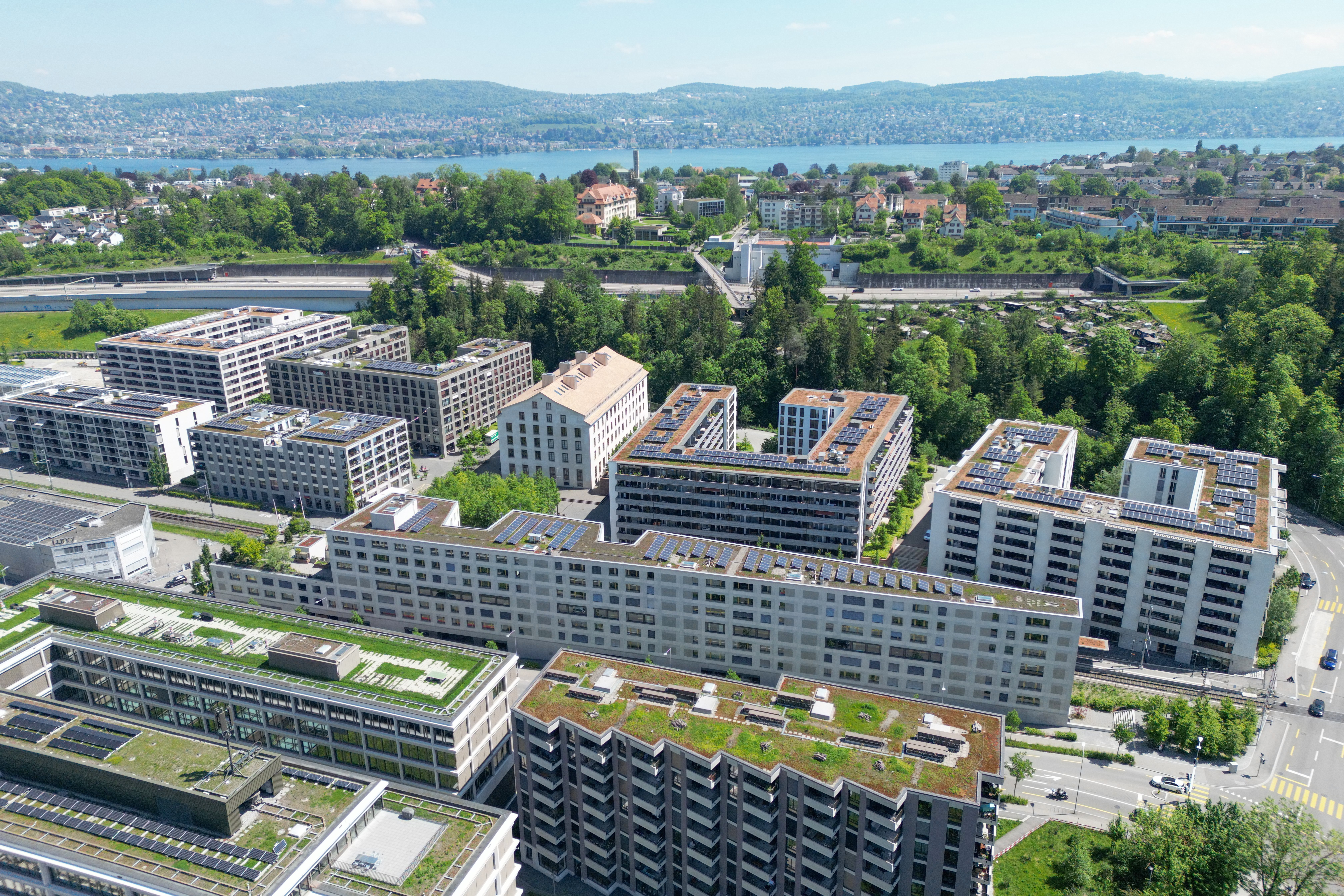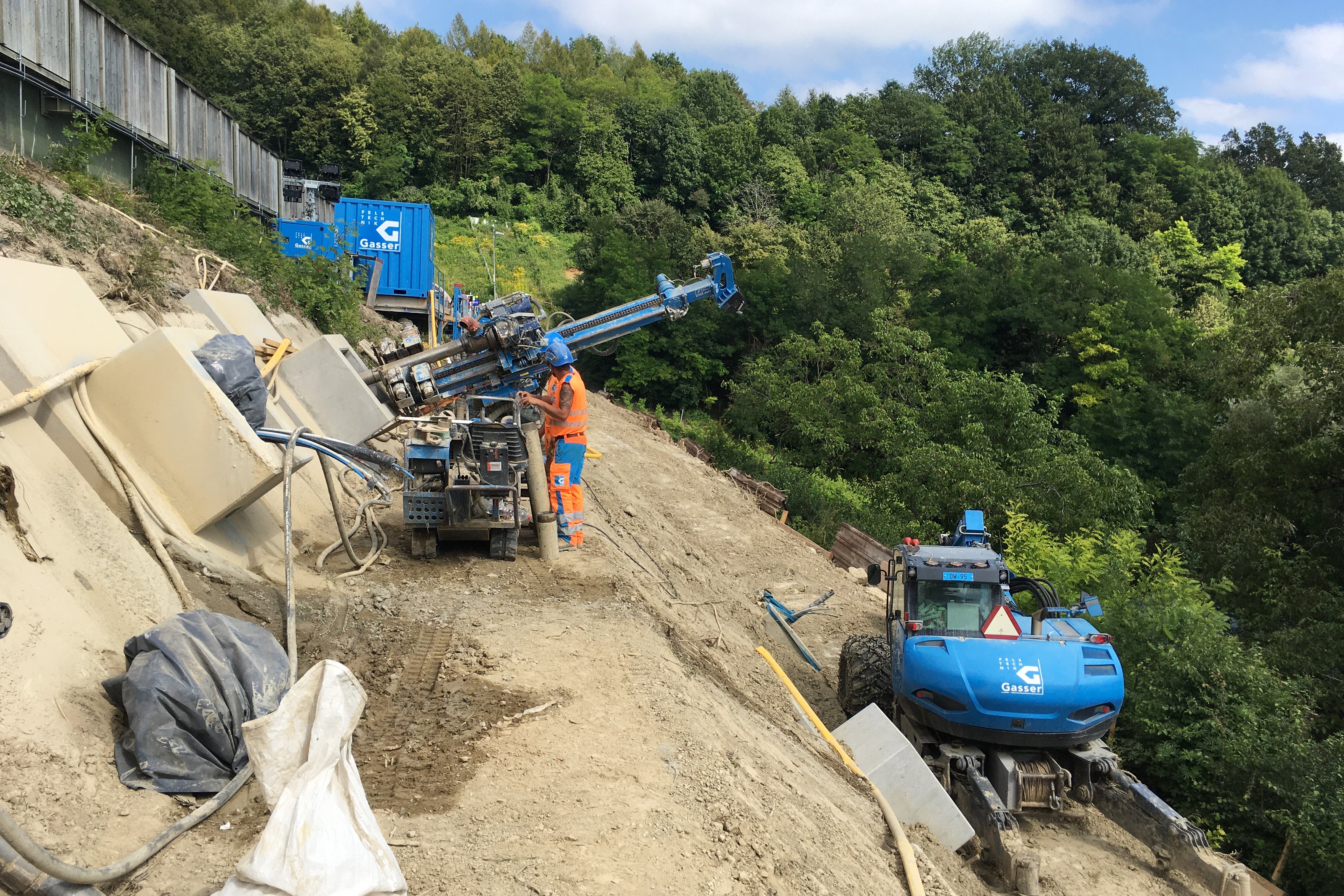22,200 m² of new rough pastures on the Kerenzerberg
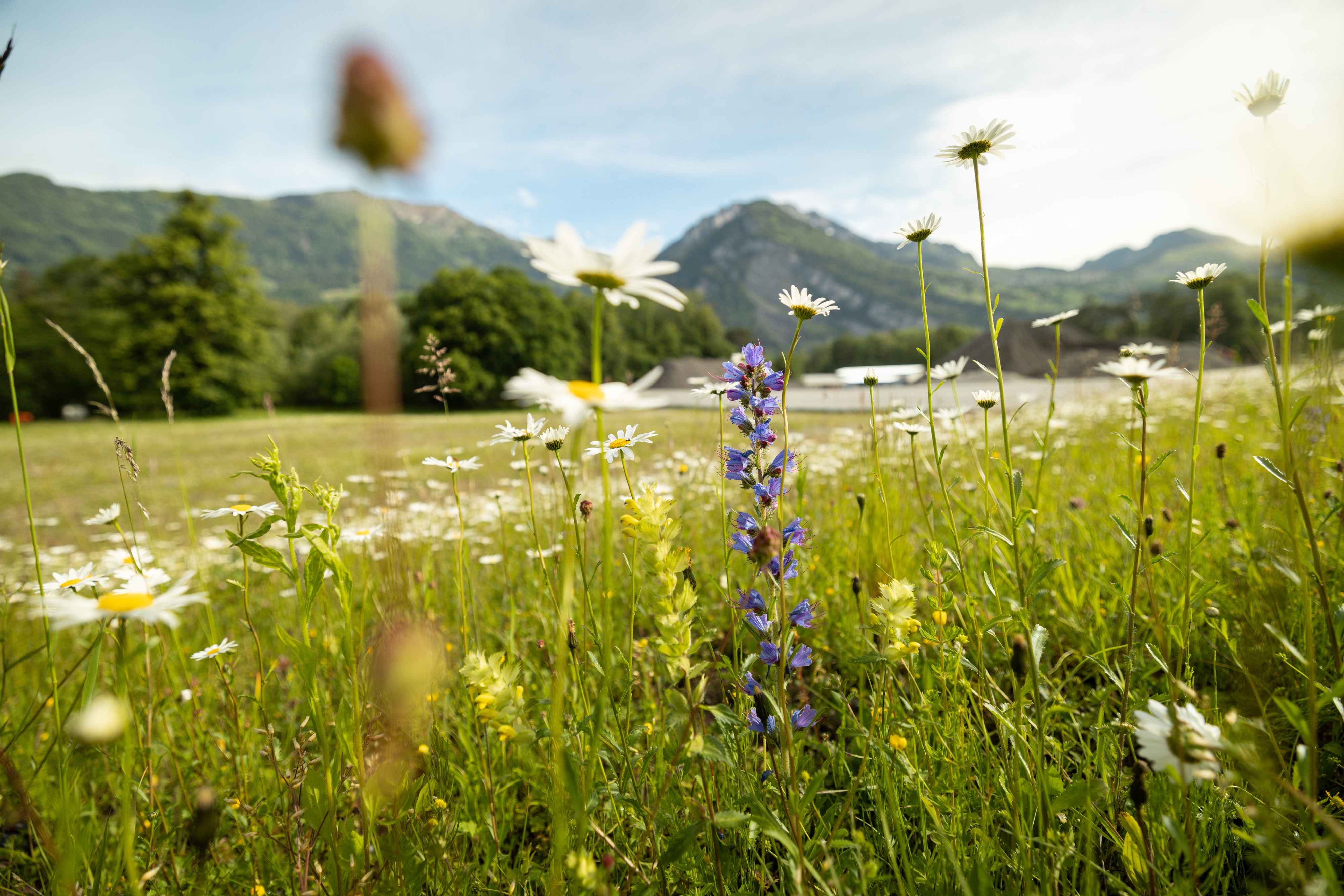
Butterflies flutter and bees buzz on the Kerenzerberg (GL). Their habitat is a newly created rough pasture. Next to it, the excavators are moving in - to create even more biodiversity. Beatrix Junghardt, project engineer at Basler & Hofmann, is part of an engineering consortium implementing ecological contingency measures or compensating measures. The fact that toads will soon be calling here is basically thanks to a tunnel construction project.
It's early summer on the Kerenzerberg. You can hear the highway. But what a blaze of color! Daisies, meadow sage, widow and knapweed flowers bloom and attract wild bees, butterflies and other insects. The colorful, 5000m2 meadow not far from the freeway tunnel is the result of "ecological compensation and contingency measures or compensating measures", as the jargon goes. It was implemented on behalf of the Federal Roads Office (Fedro). It was planned and supervised by an engineering consortium of Basler & Hofmann AG and Sieber Cassina + Partner AG.
The rough pasture is just one piece of the puzzle in a set of measures. A total of 22,200m2 of new rough pasture will be created on the Kerenzerberg over the next few years. There will also be an amphibian pond in the forest, fish ladders in a stream and a hedge along the highway.
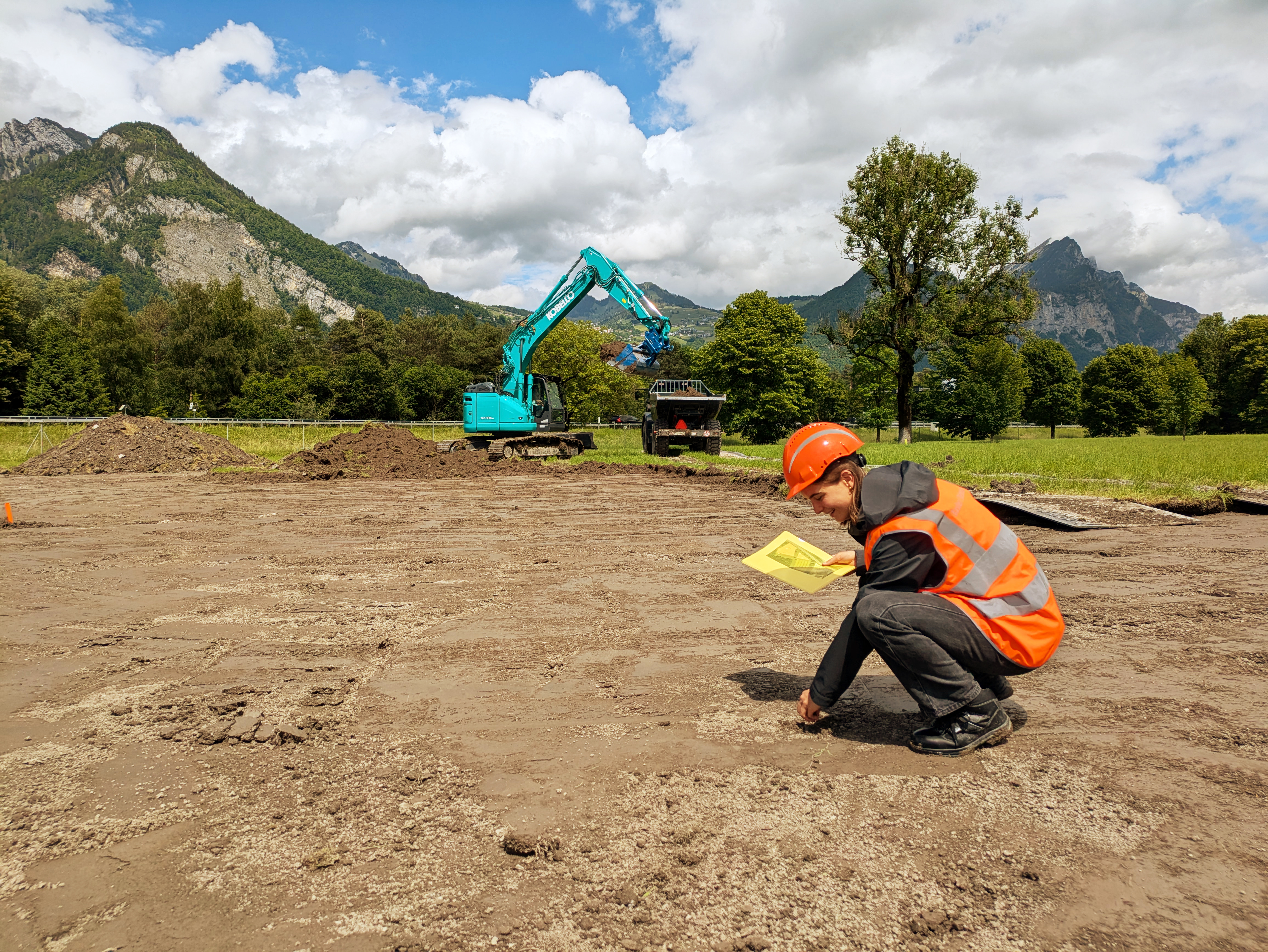
Securing humus, promoting biodiversity
At the end of May, Beatrix Junghardt, project engineer at Basler & Hofmann, is standing in a brown field. It is warm in early summer and the soil is "well dried out", as she says. Beatrix bends down and checks the condition of the soil. Behind her, the shovel of an excavator is breaking up the earth. The excavator operator is in the process of removing the top, nutrient-rich layer of soil. He will remove this nutrient-rich humus and store it temporarily at the Gäsi construction site at the tunnel portal. Beatrix and her team will look after the valuable humus there over the next few years until it is needed again. This time will come when the tunnel construction site is dismantled. The humus will then be used as soil on the area of the construction site, transforming it into soil that can be used for extensive farming.
Much of the humus soil that was previously removed as part of the environmental construction support until the end of 2024 will be used on land in the wider area to improve poor soil for the benefit of agriculture.
A new rough pasture will be created on the field where Beatrix stands today. Poor meadows only thrive on nutrient-poor soil, which is why the nutrient-rich humus is partially removed. Sowing will take place soon. The grassland seed will be sown with typical grassland plants of the region such as meadow sage, widow flowers and daisies.
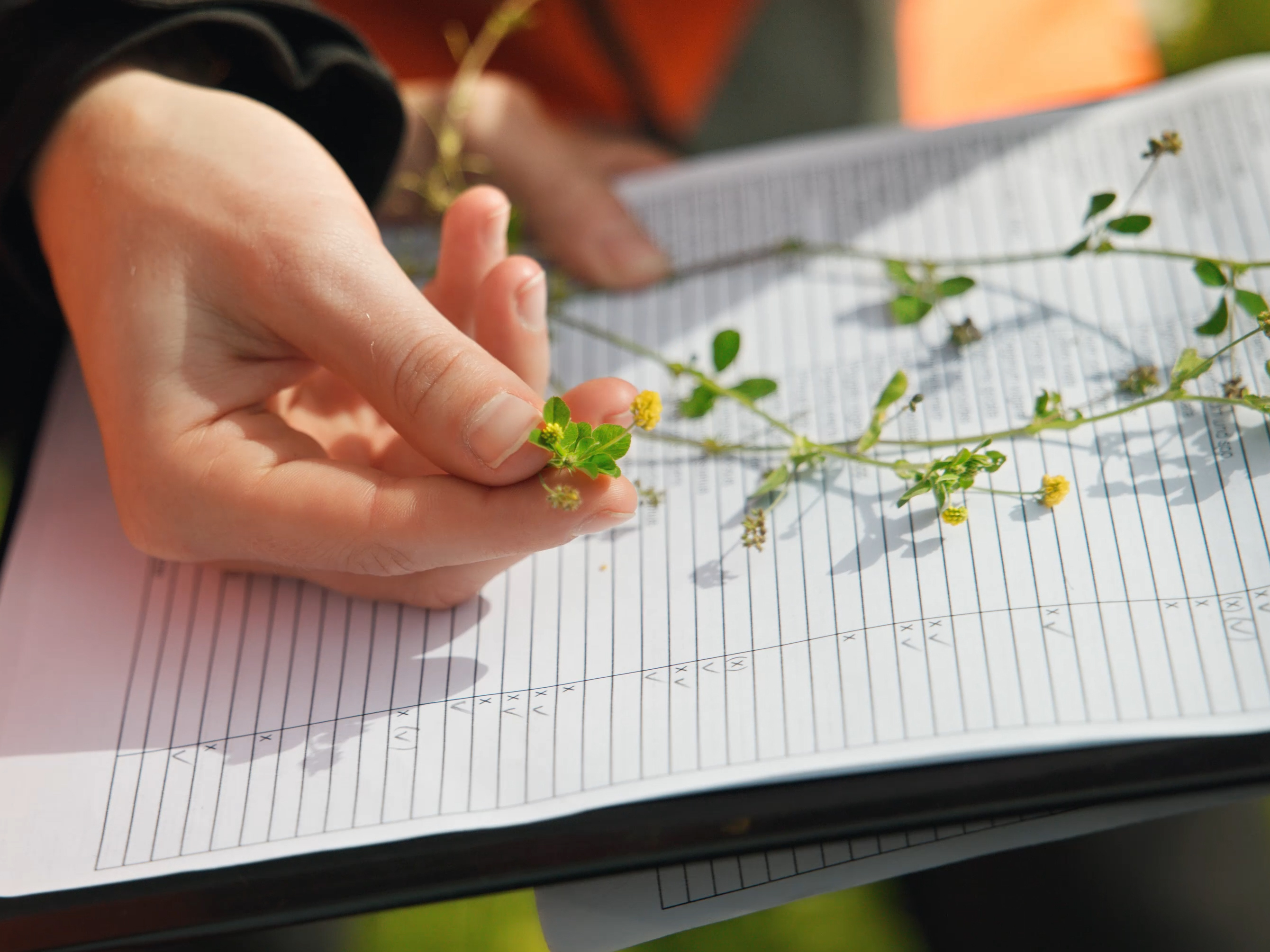
Major construction site as a trigger
The fact that biodiversity on the Kerenzerberg is receiving a boost is linked to a major construction site, the Gäsi installation site. The highway tunnel through the mountain is being extensively renovated and safety upgraded by 2028 on behalf of the Swiss Federal Roads Office. One of the main measures is the new construction of a safety tunnel; the first step, the excavation with a tunnel boring machine, was accomplished in autumn 2022.
A large construction site like this needs space to accommodate construction machinery, excavated material, accommodation for construction workers and other items. For this reason, forest was cleared and agricultural land occupied in front of the western tunnel portal, the Gäsi area, to create this installation site. And as a replacement for these interventions, new habitats are now being created in the immediate vicinity for the benefit of biodiversity.
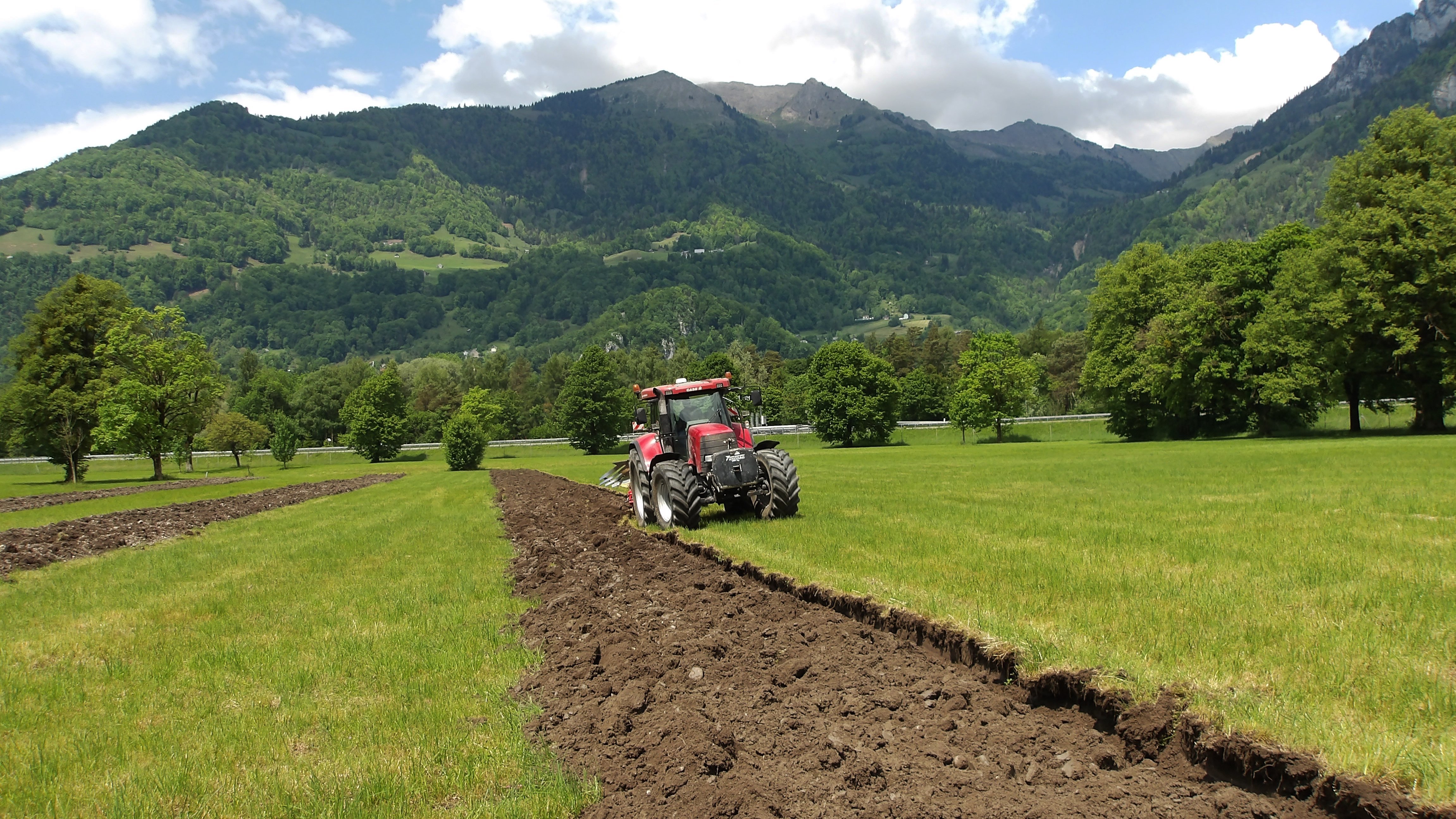
Calls of the yellow-bellied toad welcome
The engineering community is also ensuring biodiversity in the nearby forest and along bodies of water. The pond and pools that were created in a wood in the fall of 2024 still look earthy and bare. But in just one or two years' time, there will be calls of toads. "We hope that the yellow-bellied toad and other species will find a new home at the amphibian pond," says Matias Laustela, Head of Environmental Planning at Basler & Hofmann and sub-project manager at Kerenzerberg.
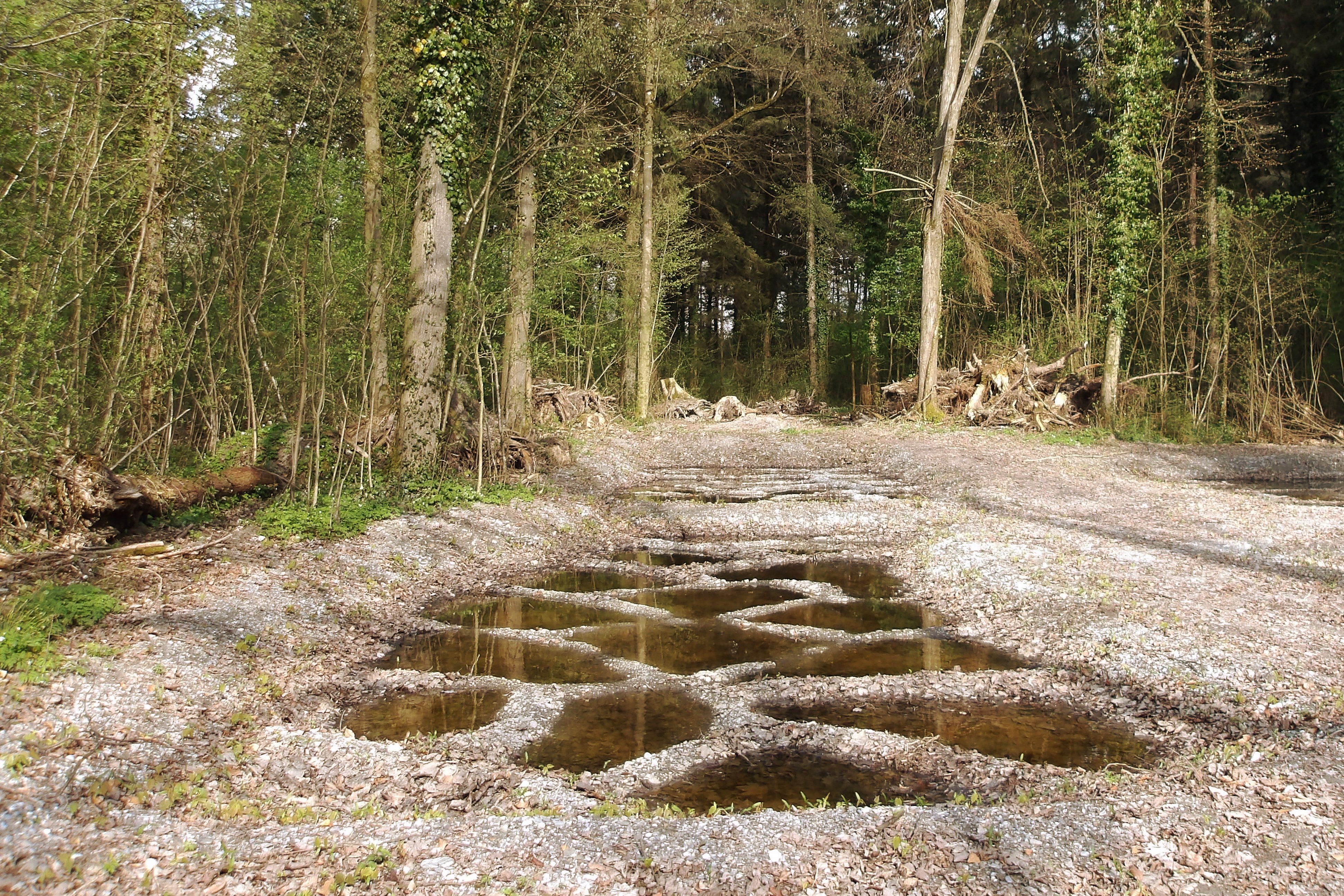
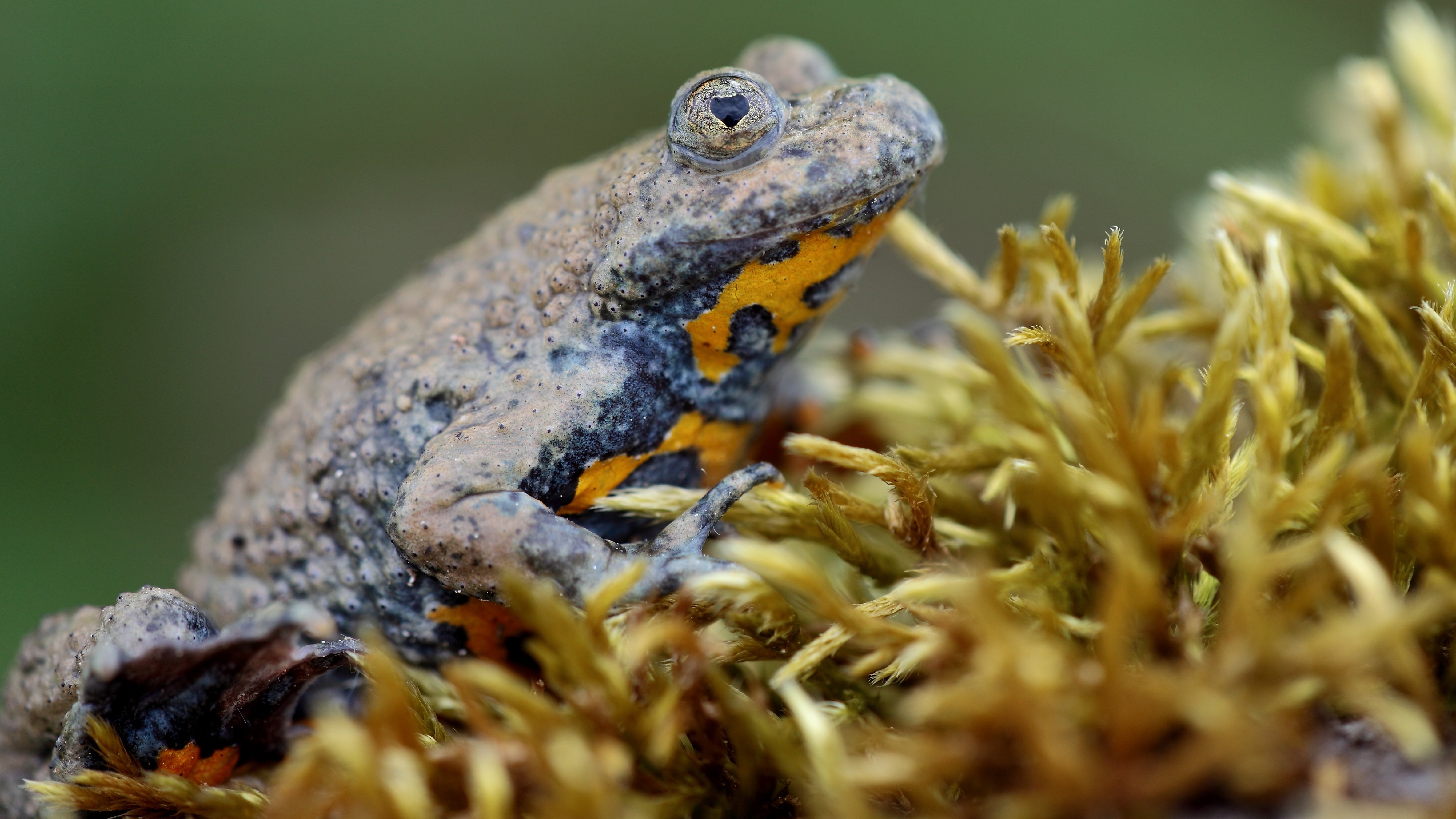
A water expert from Basler & Hofmann joined the team for the planning of the amphibian pond. Dimitri Meierhofer also helped to implement other ecological measures, such as the fish ladders in the Seegraben stream. These sills make it easier for the fish to overcome the differences in height as they migrate upstream. The Seegraben was upgraded overall, for example by shaping the banks and adding stone and wooden elements to the water so that the lake trout can circulate without obstacles and find spawning grounds.
Next up is more field work. After sowing the seed for the rough pastures, a hedge will be planted along the highway in the fall of 2025. This will help wild animals to find their way around better and provide them with protection and cover.
Years of planning
Years of project planning, planning and coordination work are required before such ecological contingency measures or compensating measures bear fruit. Everything has to be agreed with the client, the canton, other authorities and the landowners.
The basis for the planning work of the engineering consortium is the environmental impact report (EIR). In Switzerland, such a report must be submitted before starting any construction project that will have a major impact on the environment.The EIR contains a specification for the environmental construction support, usually consisting of broadly defined measures.
The environmental construction support - at Kerenzerberg, the engineering consortium - must specify these measures and monitor their implementation. It plans and projects the compensating measures alongside the construction work in the tunnel from start to finish - and even beyond, until after the deconstruction of the construction site infrastructure. Our team will ensure that the tunnel construction sites will one day become meadows and forest again. The meadows will then be returned to the farmers, who will manage them extensively.
Basler & Hofmann also involved in the tunnel
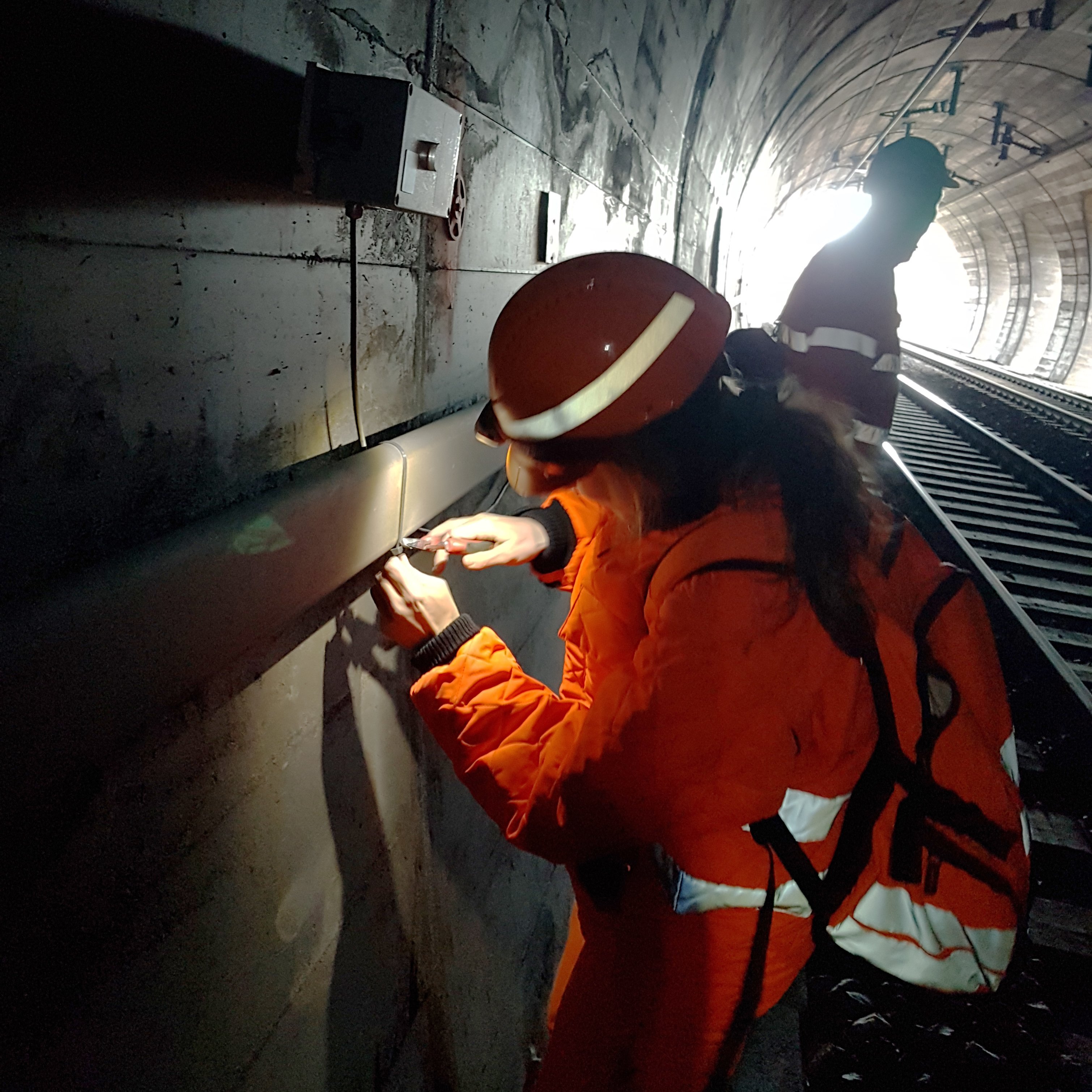
Basler & Hofmann was also involved inside the mountain at Kerenzerberg: From 2020 to 2023, a team led by our vibration specialist Adriano Manuel monitored the construction vibrations caused by blasting and drilling work during the excavation of the safety tunnel. The aim of this monitoring was to protect the Roads and Rail Tunnels in operation in the mountain as well as the surrounding structures.


